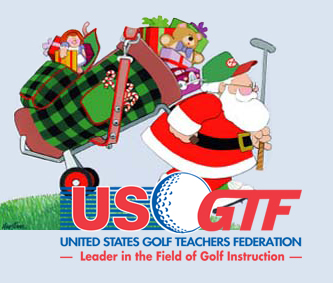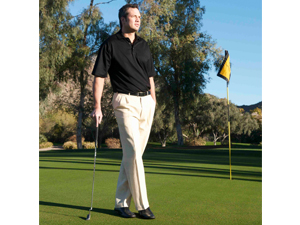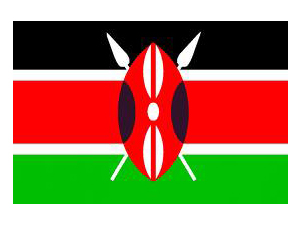Blog
18TH ANNUAL UNITED STATES GOLF TEACHERS CUP SET
Golf…the team game
To anchor or not…
Definition of a golf coach: Defining their roles in the industry
 “There are two kinds of golf: Golf and tournament golf” – Bobby Jones.
Years ago when I was the ski school director at Mount Snow in Vermont, I had achieved the highest certification available from the Canadian Ski Instructor’s Alliance. I was extremely proud of this achievement, because it signified that I was a dedicated teacher as well as a very proficient skier.
In the mid-1970s, however, the Canadian Ski Coaches Federation was created, indicating another level of certification than what I currently possessed. At first, I felt somewhat insulted that there was now a new level of ski teaching competency to achieve, and that somehow my current certification was now no longer sufficient to be regarded as a professional ski coach. As time went on, I began to think about what the differences were between a ski instructor and a ski coach, and why someone might need certification in both of these areas.
The answer, of course, was in the changes that the sport had undergone in the previous decade. People could now learn on shorter skies, equipment was much safer, and snow making as well as snow grooming had become a science. All of these elements had a huge effect worldwide on the number of people who now took up the sport. High school and college teams, ski clubs, and individuals were now competing against one another more than ever. And, the new professional ski racing circuit had also evolved. Ski racing had become a niche industry, and in short, individual skiers and teams loved to compete against one another.
I soon realized why the Canadian Ski Coaches Federation had evolved. Even though there were already accomplished ski teachers, there had become a need to certify individuals who could then help others compete, which is different from only teaching the mechanics of the sport.
Learning from this, it is easier to lay out the general differences between a coach and teacher, so that way we can apply the definition to all sports, including golf. In preparing to write this article, I reached out to the National Golf Foundation, the United States Golf Association, and the PGA of America for what their definitions were. None of them had definitions to give. Therefore, I would like to take this opportunity for the USGTF to officially and clearly lay out our definitions for a teacher and a coach.
A golf teacher is an individual who instructs others how to play the game of golf. This can include all facets of the game, from golf etiquette to swing mechanics. They may teach all age and ability ranges of individuals learning the game. A golf teacher is generally very knowledgeable about the game, and they themselves are proficient players. So, the head pro at your local golf course or the instructor at your nearby golf range are golf teachers.
A golf coach is a person who helps a team or individual COMPETE at golf. As anyone who has ever played in a golf tournament knows, competing and playing for fun are two very different things, as Bobby Jones noted. Like a golf teacher, a golf coach is someone who is very knowledgeable about the game, but, unlike a teacher, a coach’s goal is to get that individual or team to compete well and hopefully win. A coach is there to help overcome the adversity of competition. This may include devising a game strategy, dealing with team dynamics, or encouraging confidence in a player when they may lack self-confidence.
Just as the ski industry evolved many years ago, the golf industry is currently undergoing a change. Professional golf has never been more popular. The incentive for playing competitive golf has never been higher, and new technology and better equipment has made the game more accessible to more people around the world than at any point in history. Similar to the ski industry, there is now a need for professional qualified golf coaches.
The golf teacher and the golf coach both fulfill vitally important roles in the industry. Imagine you are a beginner who wants to learn the game, or even an advanced player who just needs a few tips on lowering your score. In both cases, one would more likely seek out a golf teacher for lessons. On the other hand, if you needed help overcoming the adversity of tournament golf or the grind of daily practice, then a golf coach is what you would need. Naturally, there are many overlapping characteristics between a golf teacher and a golf coach. Certainly, an individual can be both. But, it is that element of competition that sets these two roles apart.
“There are two kinds of golf: Golf and tournament golf” – Bobby Jones.
Years ago when I was the ski school director at Mount Snow in Vermont, I had achieved the highest certification available from the Canadian Ski Instructor’s Alliance. I was extremely proud of this achievement, because it signified that I was a dedicated teacher as well as a very proficient skier.
In the mid-1970s, however, the Canadian Ski Coaches Federation was created, indicating another level of certification than what I currently possessed. At first, I felt somewhat insulted that there was now a new level of ski teaching competency to achieve, and that somehow my current certification was now no longer sufficient to be regarded as a professional ski coach. As time went on, I began to think about what the differences were between a ski instructor and a ski coach, and why someone might need certification in both of these areas.
The answer, of course, was in the changes that the sport had undergone in the previous decade. People could now learn on shorter skies, equipment was much safer, and snow making as well as snow grooming had become a science. All of these elements had a huge effect worldwide on the number of people who now took up the sport. High school and college teams, ski clubs, and individuals were now competing against one another more than ever. And, the new professional ski racing circuit had also evolved. Ski racing had become a niche industry, and in short, individual skiers and teams loved to compete against one another.
I soon realized why the Canadian Ski Coaches Federation had evolved. Even though there were already accomplished ski teachers, there had become a need to certify individuals who could then help others compete, which is different from only teaching the mechanics of the sport.
Learning from this, it is easier to lay out the general differences between a coach and teacher, so that way we can apply the definition to all sports, including golf. In preparing to write this article, I reached out to the National Golf Foundation, the United States Golf Association, and the PGA of America for what their definitions were. None of them had definitions to give. Therefore, I would like to take this opportunity for the USGTF to officially and clearly lay out our definitions for a teacher and a coach.
A golf teacher is an individual who instructs others how to play the game of golf. This can include all facets of the game, from golf etiquette to swing mechanics. They may teach all age and ability ranges of individuals learning the game. A golf teacher is generally very knowledgeable about the game, and they themselves are proficient players. So, the head pro at your local golf course or the instructor at your nearby golf range are golf teachers.
A golf coach is a person who helps a team or individual COMPETE at golf. As anyone who has ever played in a golf tournament knows, competing and playing for fun are two very different things, as Bobby Jones noted. Like a golf teacher, a golf coach is someone who is very knowledgeable about the game, but, unlike a teacher, a coach’s goal is to get that individual or team to compete well and hopefully win. A coach is there to help overcome the adversity of competition. This may include devising a game strategy, dealing with team dynamics, or encouraging confidence in a player when they may lack self-confidence.
Just as the ski industry evolved many years ago, the golf industry is currently undergoing a change. Professional golf has never been more popular. The incentive for playing competitive golf has never been higher, and new technology and better equipment has made the game more accessible to more people around the world than at any point in history. Similar to the ski industry, there is now a need for professional qualified golf coaches.
The golf teacher and the golf coach both fulfill vitally important roles in the industry. Imagine you are a beginner who wants to learn the game, or even an advanced player who just needs a few tips on lowering your score. In both cases, one would more likely seek out a golf teacher for lessons. On the other hand, if you needed help overcoming the adversity of tournament golf or the grind of daily practice, then a golf coach is what you would need. Naturally, there are many overlapping characteristics between a golf teacher and a golf coach. Certainly, an individual can be both. But, it is that element of competition that sets these two roles apart.
MERRY CHRISTMAS AND HAPPY NEW YEAR!!
RECOMMENDED WEBSITE IN THE WORLD OF GOLF
in fiamme, (www.infiamme.net), The World’s Finest Italian Golf Apparel, stands as a premier apparel brand in the golf and fine-clothing industries. Readmore
USGTFMEMBERS.COM WANTS YOU!
KENYA JOINS WGTF AS NEWEST MEMBER
The World Golf Teachers Federation welcomes the country of Kenya as the newest member of the WGTF. Readmore






